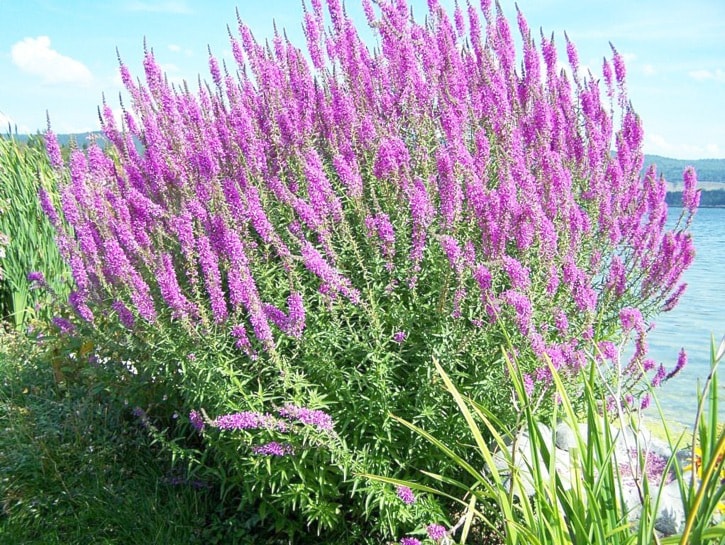The most difficult invasive plants to manage are those that grow in aquatic environments.
There are often few effective options available to treat aquatic invasive species and they have widespread negative impacts on water quality, water quantity, recreation, ecosystem processes, and native habitats. Our most important management tool is prevention.
Once these species are established, management programs are left, for the most part, to observe and note their progress and attempt to slow their spread to water systems nearby.
Two aquatic invasive species that are establishing in the lakes within the Cariboo Chilcotin are Yellow Flag Iris and Purple Loosestrife. Both plants choke out native aquatic plants that provide habitat and food for fish, birds, insects, or small mammals. These invasive aquatics form dense stands in wetlands, shallow ponds, and along stream banks causing an alteration in watercourse.
Yellow Flag Iris is a native to different regions throughout Europe, Asia, and Africa. It was brought to North America as an ornamental pond plant and is a common choice for water gardens because of its sword shaped leaves and showy yellow flowers.
So you may wonder what makes this aquatic beauty so unruly? Yellow Flag Iris can be extremely aggressive as a result of its high seed production and ability to grow new plants from small fragments of root. It can grow in ditches or lakes and in fresh or salt water. Yellow Flag Iris forms dense mats with its roots, which collect sediment and leads to an interruption in the flow of water. It is still being sold in some nurseries and has escaped cultivation and has been identified in areas of Williams Lake, Lac La Hache and Bridge Lake.
Purple Loosestrife is a native to Europe and Asia after arriving in North America in the 1800s in ship ballasts and in imported sheep wool. It then became a popular ornamental pond plant that soon escaped cultivation and now has taken over many lakeshores, wetlands, ditches, ponds, and wet pastures throughout North America. A single plant can produce up to one million seeds in one season and like Yellow Flag Iris, also has the ability to grow new plants from plant fragments. Within the Cariboo Chilcotin, Purple Loosestrife has established itself in areas of Lac La Hache, Bouchie Lake, Dragon Lake, and Baker Creek.
Anyone with questions or concerns about either one of these aquatic invaders or needs some assistance in the identification or management of them can contact the CRD’s Invasive Plant Management department at 250-392-3351 or toll free at 1-800-665-1636 or visit the CRD website at cariboord.bc.ca.
Article and photos courtesy of the Cariboo Regional District.

Yellow Flag Iris
